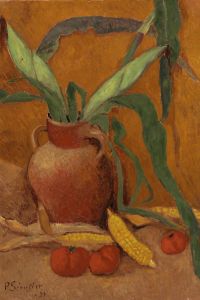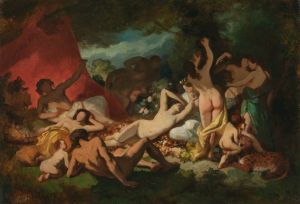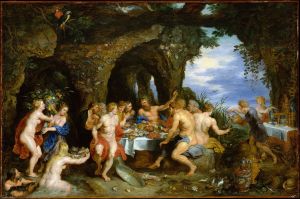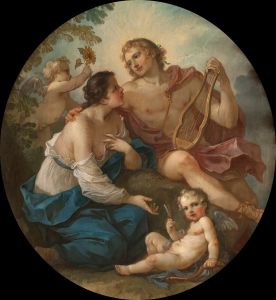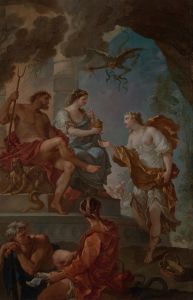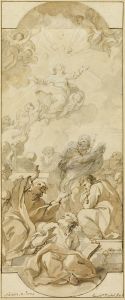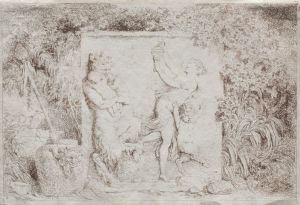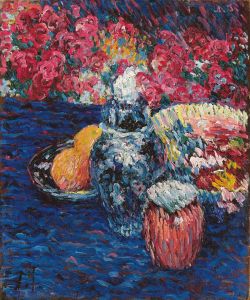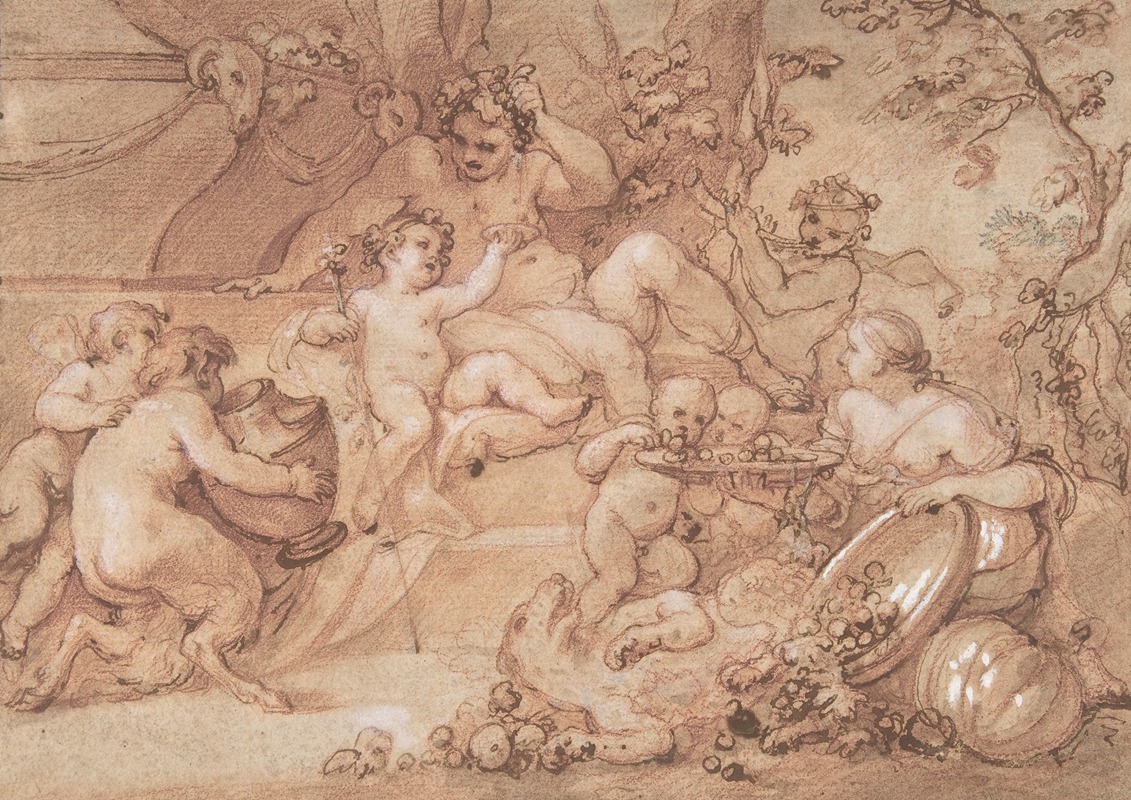
The Harvest of Silenus
A hand-painted replica of Charles-Joseph Natoire’s masterpiece The Harvest of Silenus, meticulously crafted by professional artists to capture the true essence of the original. Each piece is created with museum-quality canvas and rare mineral pigments, carefully painted by experienced artists with delicate brushstrokes and rich, layered colors to perfectly recreate the texture of the original artwork. Unlike machine-printed reproductions, this hand-painted version brings the painting to life, infused with the artist’s emotions and skill in every stroke. Whether for personal collection or home decoration, it instantly elevates the artistic atmosphere of any space.
Charles-Joseph Natoire's "The Harvest of Silenus" is a notable work by the French Rococo painter, who was active during the 18th century. Natoire, born in 1700 in Nîmes, France, was a prominent artist of his time, known for his elegant and decorative style that was characteristic of the Rococo movement. He studied under the tutelage of Louis Galloche and François Lemoyne, which helped him develop a refined technique that would later define his artistic career.
"The Harvest of Silenus" is a painting that exemplifies Natoire's skill in capturing mythological themes with a sense of grace and fluidity. Silenus, a figure from Greek mythology, is often depicted as a jovial, rotund companion of Dionysus, the god of wine. He is typically portrayed as an older man, sometimes inebriated, and is associated with the revelry and indulgence that accompany the harvest of grapes for wine-making. This theme fits well within the Rococo style, which often embraced playful and light-hearted subjects.
Natoire's work often included mythological and allegorical subjects, and "The Harvest of Silenus" is no exception. The painting likely features Silenus surrounded by satyrs and maenads, figures commonly associated with Dionysian myths. These characters are often depicted in a state of merriment, celebrating the abundance of the harvest. Natoire's use of soft, pastel colors and dynamic compositions would have contributed to the lively and festive atmosphere of the scene.
Throughout his career, Natoire was recognized for his contributions to the arts, becoming a member of the prestigious Académie Royale de Peinture et de Sculpture in 1734. His works were highly sought after, and he received numerous commissions for both public and private spaces. In addition to his mythological paintings, Natoire was also known for his decorative work in various châteaux and churches, including the Chapel of Versailles.
"The Harvest of Silenus" reflects the Rococo era's fascination with classical mythology, as well as its emphasis on beauty, elegance, and the pleasures of life. Natoire's ability to convey these themes through his art made him a significant figure in the Rococo movement, and his works continue to be appreciated for their artistic merit and historical significance.
While specific details about the provenance and current location of "The Harvest of Silenus" may not be widely documented, Natoire's broader body of work remains an important part of 18th-century French art history. His paintings are held in various collections, including museums and galleries that specialize in Rococo art. Natoire's legacy as a master of the Rococo style endures, and his works continue to be studied and admired for their contribution to the visual culture of his time.






